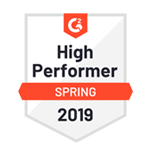Staffing agencies report a 45% increase in applications over the past year. Half these submissions come from AI-powered tools and bots. Resume spam overwhelms recruiters, clogs applicant tracking systems, and buries qualified candidates under mountains of irrelevant applications.
Modern recruitment technology creates solutions for this escalating challenge. Understanding resume spam and implementing prevention strategies protects agency productivity and placement quality.
Understanding Resume Spam
What Resume Spam Means for Staffing Agencies?
Resume spam refers to indiscriminate mass submission of generic resumes to numerous job postings without customization or genuine interest. Job seekers send identical applications to hundreds of positions, disregarding specific requirements or qualifications.
This practice exploits one-click apply features and automated submission tools. Candidates prioritize volume over relevance, hoping statistical probability yields interviews despite poor matches.
For staffing firms, resume spam creates significant operational challenges. Recruiters waste hours reviewing unqualified applications. Quality candidates disappear within floods of irrelevant submissions. Client satisfaction suffers when agencies cannot quickly identify suitable talent.
The Rise of AI-Powered Resume Spam
Artificial intelligence revolutionized application spam capabilities. Research shows 46% of job seekers now use ChatGPT for resume writing. Among Gen Z candidates, usage reaches nearly 60%.
AI-enhanced resume distribution services automatically match job seekers with positions and submit applications without candidate review. These platforms scan job boards continuously, applying to every remotely relevant opening.
Some automated systems submit 50 applications daily per user. These tools cost approximately $13 weekly, making mass applications financially accessible to anyone.
One-Click Apply and Mass Applications
Easy Apply and One-Click Apply buttons on LinkedIn, Indeed, and ZipRecruiter enable applications within seconds. Candidates skip reading job descriptions entirely. They submit generic resumes without understanding role requirements.
This convenience benefits legitimate job seekers but encourages low-intent applications. Candidates apply to positions they barely qualify for or genuinely don’t want. The barrier to application becomes so low that thoughtless submissions dominate applicant pools.
Staffing agencies receive applications from candidates who literally don’t remember applying. This wastes everyone’s time and resources.
How Resume Spam Impacts Recruitment
Resume spam fundamentally disrupts recruitment efficiency. Applicant tracking systems become clogged with irrelevant data. Search functionality degrades when databases contain mostly unqualified candidates.
Recruiter burnout increases dramatically. Screening hundreds of spam applications daily drains energy and motivation. Quality assessment suffers when volume overwhelms capacity.
Client relationships strain under delayed placements. When spam buries qualified candidates, time-to-fill metrics worsen. Clients question agency effectiveness despite spam being an industry-wide problem.
Types and Sources of Resume Spam
AI-Generated Resume Applications
AI writing tools create polished resumes in minutes. However, these resumes often contain excessive buzzwords, lack specific details, and use unnatural phrasing.
AI-generated applications frequently include keyword stuffing. The software scans job descriptions and inserts matching terms regardless of actual experience. Resumes appear highly relevant to ATS algorithms but reveal superficiality under human review.
Detecting AI-written content requires careful examination. Look for overly generic achievement statements, repetitive language patterns, and the absence of concrete metrics or specific project details.
Keyword Stuffing and ATS Gaming
Sophisticated candidates understand ATS keyword matching. They manipulate this knowledge by loading resumes with job description terminology they lack genuine experience in.
Some resume templates include hidden white text containing hundreds of keywords. This invisible content tricks parsing software while remaining hidden from human readers. Other candidates simply list every skill mentioned in postings.
These tactics generate false-positive matches. Recruiters waste time interviewing candidates whose resumes promise expertise they don’t possess.
Bot-Driven Automated Applications
Application bots extract job listings and submit resumes automatically. These tools require minimal candidate involvement beyond initial setup.
Bot applications lack any customization. Cover letters get copied identically across submissions. Responses to screening questions appear generic or nonsensical. Application timestamps cluster unnaturally as bots submit dozens simultaneously.
Extreme cases involve candidates applying hundreds of times daily. Their actual interest in any specific position approaches zero.
Generic Mass-Submitted Resumes
Traditional resume spam involves manually copying generic resumes across multiple postings. While less automated than bots, this approach still floods systems with low-quality applications.
Mass-submitted resumes demonstrate zero customization. They reference the wrong companies, include irrelevant experience, and show no understanding of role requirements. Skills sections list everything imaginable rather than position-relevant capabilities.
These applications signal desperation rather than genuine interest. Candidates play numbers games, hoping something eventually works.
Why Resume Spam Hurts Staffing Firms?
Wasted Recruiter Time and Resources
Processing resume spam consumes substantial recruiter hours. Reviewing obviously unqualified applications provides zero value but requires time regardless.
Studies indicate recruiters spend approximately 23 hours screening resumes per hire. Resume spam inflates this dramatically. Time spent on spam reduces capacity for revenue-generating activities.
Manual spam filtering becomes unsustainable at scale. Agencies need technological solutions to preserve recruiter productivity.
Clogged Applicant Tracking Systems
Applicant tracking systems designed for hundreds of applications struggle with thousands. Database performance degrades. Search functionality slows. System costs increase with storage requirements.
Spam applications create noise, obscuring quality candidates. Relevant resumes get buried pages deep in search results. Recruiters miss excellent candidates simply because spam dominates visibility.
Database maintenance becomes an ongoing challenge. Purging spam regularly consumes IT resources and risks accidentally removing legitimate candidates.
Difficulty Identifying Quality Candidates
Overwhelming application volumes make quality identification exponentially harder. Recruiters cannot give adequate attention to each submission when reviewing hundreds daily.
Quality candidates receive delayed responses or none at all. They accept other offers before spam-overwhelmed agencies contact them. Competitive disadvantage increases directly with spam volume.
Client-specific matching suffers when spam prevents thorough candidate evaluation. Placement quality decreases when agencies cannot invest sufficient time in proper assessment.
Reduced Client Satisfaction Rates
Clients expect quick, qualified candidate submissions. Resume spam delays delivery timelines. When agencies take longer to present suitable candidates, client confidence erodes.
Submitting spam-sourced candidates who fail client interviews damages the agency’s reputation. Repeated mismatches suggest poor screening processes regardless of spam being the root cause.
Client retention suffers when spam prevents agencies from delivering consistent quality. Revenue loss follows dissatisfied clients seeking alternative staffing partners.
Identifying Low-Intent Applications
Red Flags in Resume Content
Generic objective statements signal low intent. Phrases like “seeking challenging position” or “career growth opportunities” lack specificity, indicating genuine interest.
Irrelevant experience sections raise immediate concerns. Resumes listing skills completely unrelated to position requirements demonstrate non-targeted applications.
Missing or vague achievement metrics suggest fabricated or exaggerated experience. Legitimate candidates provide specific examples and quantifiable results.
Detecting AI-Written Resumes
AI-generated resumes exhibit distinctive characteristics. Excessive buzzword usage without supporting details indicates artificial creation. Phrases like “results-oriented professional” and “proven track record” appear repeatedly without specificity.
Unnatural phrasing and overly formal language suggest AI authorship. Real resumes contain personality and voice variation. AI outputs feel robotic and homogeneous.
Lack of concrete project details reveals AI generation. Human-written resumes include specific technologies, team sizes, timelines, and outcomes. AI creates vague generalities instead.
Spotting Copy-Pasted Cover Letters
Identical cover letter openings across multiple applications indicate copy-paste spam. Generic greetings like “Dear Hiring Manager” coupled with non-specific company references signal mass submissions.
Wrong company names appearing in letters definitely prove copy-paste errors. Applicants occasionally forget to update template fields when rushing through multiple applications.
Cover letters mentioning irrelevant requirements from different postings reveal careless mass application. Candidates accidentally include details from other positions they applied to simultaneously.
Recognizing Pattern-Based Submissions
Application timing patterns expose automated spam. Dozens of submissions arriving within minutes suggest bot activity rather than human applicants.
Identical resume formatting across numerous applicants from the same region indicates shared automation tools. Specific template designs become recognizable signatures of particular spam software.
Sequential application patterns where candidates apply to every opening regardless of qualification level reveal a systematic approach rather than targeted interest.
How RecruitBPM Prevents Resume Spam?
Intelligent Application Screening Filters
RecruitBPM employs advanced filtering to detect spam patterns automatically. The system analyzes application metadata, submission timing, and content patterns, identifying automated submissions.
Machine learning algorithms recognize AI-generated content characteristics. Keyword stuffing detection flags resumes with unnatural term density or hidden text manipulation.
Duplicate detection across job orders prevents the same spam candidates from appearing repeatedly. This cross-position intelligence protects entire agency operations simultaneously.
Custom Qualification Requirements
RecruitBPM enables customizable screening questions per job order. Required responses force applicants to engage meaningfully rather than clicking through mindlessly.
Mandatory fields specific to each position filter generic applications automatically. Candidates must demonstrate a basic understanding of the role requirements to submit applications.
Qualification thresholds eliminate obviously unfit candidates before human review. Automated disqualification based on clear criteria preserves recruiter time for viable candidates.
AI-Powered Spam Detection
Artificial intelligence within RecruitBPM identifies spam submission patterns. The system learns from historical data, which application characteristics correlate with low-quality candidates.
Behavioral analysis detects bot activity through application speed, interaction patterns, and response consistency. Human applicants exhibit natural variation that bots cannot replicate.
Continuous learning improves detection accuracy over time. As spam techniques evolve, RecruitBPM’s AI adapts, recognizing new manipulation methods.
Engagement Signal Analysis
RecruitBPM tracks genuine candidate engagement beyond application submission. Metrics include career page visits, job description view duration, and application completion time.
Higher engagement scores correlate strongly with genuine interest and qualification. Candidates spending time researching companies and carefully completing applications receive priority.
This engagement-based ranking ensures recruiters see the most promising candidates first. Quality applicants surface above spam submissions automatically.
Best Practices to Reduce Resume Spam
Strengthening Job Application Requirements
Implement multi-step application processes for critical positions. Require brief assessments or work samples demonstrating relevant skills. This effort investment filters casual mass applicants.
Request short written responses explaining specific interest. Questions like “Why this position specifically?” force personalization that spam tools cannot provide.
Video introduction requirements effectively eliminate bot submissions. Automated systems cannot generate authentic video responses at scale.
Optimizing Job Descriptions for Quality
Include explicit disqualifiers prominently in postings. Clearly state, “Candidates without X experience will not be considered.” This discourages unqualified mass applicants.
Add “Read This First” statements at description openings. Direct instructions like “Only apply if meeting all listed requirements” set clear expectations.
Use specific rather than generic language. Detailed requirement descriptions attract targeted applicants while discouraging shotgun approaches.
Limiting Easy-Apply Features Strategically
Disable one-click apply for positions requiring careful candidate selection. Direct applicants to structured application forms on agency career pages instead.
Balance convenience with quality control. Easy apply may work for high-volume hourly positions but undermines professional role recruitment quality.
Integrate full application processes, maintaining reasonable completion times while requiring meaningful engagement. Smart application flows prevent spam without creating excessive candidate friction.
Implementing Smart Screening Questions
Design questions requiring position-specific knowledge. Generic responses become impossible when questions reference actual job requirements.
Avoid yes/no questions; bots answer randomly. Open-ended questions demanding thoughtful responses filter automated submissions effectively.
Rotate questions periodically, preventing automation tools from learning standard responses. Fresh questions maintain spam filtering effectiveness continuously.
Future-Proofing Against Resume Spam
Balancing Automation with Human Judgment
Technology handles initial spam filtering efficiently. However, human assessment remains essential for final candidate evaluation.
Automated systems excel at identifying obvious spam patterns and disqualifying clearly unfit applications. Recruiters then focus their expertise on a nuanced evaluation of remaining qualified candidates.
This hybrid approach maximizes both efficiency and quality. Neither pure automation nor manual processing alone delivers optimal results.
Adapting to Evolving AI Application Tools
Resume spam techniques constantly evolve. Staffing agencies must continuously update detection methods as spammers develop new manipulation approaches.
Regular system updates incorporating the latest spam pattern recognition maintain effectiveness. Agencies should partner with technology providers committed to ongoing anti-spam innovation.
Information sharing across the recruitment industry helps everyone combat spam collectively. Collaborative approaches identify emerging threats faster than isolated efforts.
Maintaining Quality Over Quantity Focus
Resist pressure to process every application received. Prioritize quality candidate identification over completeness, reviewing every submission.
Set realistic screening goals aligned with actual hiring needs. Focus recruiter time on candidates genuinely matching requirements rather than attempting an impossible, comprehensive review.
Measure success through placement quality metrics rather than application processing volume. Quality-focused approaches deliver better client outcomes despite leaving some spam unreviewed.
Protect your agency from resume spam with intelligent screening. RecruitBPM combines advanced AI detection with customizable filtering, ensuring recruiters spend time on qualified candidates instead of sorting through spam. Our platform identifies low-intent applications automatically while surfacing genuinely interested, qualified talent.
Discover how RecruitBPM eliminates resume spam while accelerating quality placements. Schedule your demo today.

















